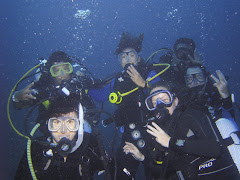What is the hyperbaric chamber?
The chamber is just a small room in which air can be compressed to a pressure greater than normal. If you have been in an airplane, then you have already been in a hyperbaric chamber. The chamber has port holes and a comfortable bench to lie down on.
What is hyperbaric oxygen therapy ?
We normally take in 21% of oxygen from the air that we breath. By putting the patient into the higher than normal pressure then giving them 100% oxygen, the beneficial effects of oxygen is greatly increased. It’s a painless procedure which can for example, reduce the size of the bubbles of nitrogen in the body and in doing so the damage to the tissues is decreased, reducing the pain and improving micro circulation. The hyperbaric oxygen that is dissolved in the plasma, helps to restore the damaged tissue. The subsequent reduction in swelling further improves circulation in the damaged areas. So in the case of a stubborn wound which refuses to heal because of poor circulation hyperbaric oxygen can increase microscopic blood vessel growth and improve the ability of white blood cells to fight off infection.
Why have I been referred to the hyperbaric chamber?
There are two main reasons why you may have been sent to the chamber.
Decompression Illness (the bends).
This is where excess nitrogen bubbles have been trapped in the body, causing DCI.
DCS type 1. Joint pain & skin bends only. Caused by the physical effect of the bubbles and immune reaction on the tissues.
DCS type 2. Typically due to bubbles in the nerve tissue of the spinal cord or brain, causing a wide range of neurological problems including, but not limited to:
Ÿ Numbness and tingling in the limbs particularly in the fingers and toes.
Ÿ Limb weakness or paralysis
Ÿ Back or torso pain.
Ÿ Urinary retention (cannot pee).
Ÿ Lack of balance, poor gait and poor co-ordination.
Ÿ Extreme fatigue.
Wound Healing.
You may have a wound that is not responding to antibiotics and you may suffer from poor circulation. This can be helped by hyperbaric oxygen as it forces oxygen to those tissues which have been damaged, encourages blood vessels to grow, which will promote and accelerate healing.
What should I expect when I arrive?
When you arrive you will introduces to our staff and then you will asked to sign a consent form for your hyperbaric treatment. You also need to provide some form payment, which is usually a DAN insurance card or a credit card. You will be supplied with suitable clothing, and be asked if you have anything flammable like lipstick or vaseline in your pockets. Because hyperbaric oxygen therapy requires 100% oxygen, any form of smoking material, electrical appliances, lighters, books and magazines are prohibited. If you watch is not used for diving, then you should leave it with a friend or family member.
We will give you an oxygen mask, to try on your face so that it’s comfortable for you. You will also be asked to describe your symptoms before you go into the chamber and during treatment so we can monitor your progress. Our staff will be with you throughout the treatment so feel free to ask any questions.
How will it feel?
For the first 10 minutes or so the chamber will be quite hot and noisy, but it will get cooler and quieter once we have reached the required pressure. If it gets too cold, you can have a blanket, or if the noise is too much for you, then let the attendant know that’s with you.
You will feel the pressure change in your ears, just like in an airplane. If you have problems equalizing your ears, or feel any discomfort, you should tell your attendant immediately. You will be given an oxygen mask to put on and encouraged to breath deeply. The remainder of the treatment should be relaxing, you will occasionally be asked to remove the oxygen mask for an air break, and take in fluids. Non greasy foods are allowed in the chamber like fruit or granola bars; ask the staff if you are not sure. If you need to go to the bathroom there is a bed pan and male urinal under the bed. The attendant will move into the outer lock and the TV monitors switched off for privacy. You are encouraged not to “hold on” as this can cause great discomfort, especially on the ascent.
How long will the treatment last?
If you have been diagnosed with DCS then the treatment should take about 5 hours however this will depend on your progress and what the doctor who admitted you decides. Once you have had a treatment, you will then need to go back to the doctor to be evaluated. The doctor may send you home, or may recommend more treatments.
Wound healing treatments tend to last 2 hours but often multiple treatments of 20 or more are required. These tend to be scheduled either in the morning 6 – 8am or afternoons 4-6pm.
Family members and friends are welcome to come along in the first instance, however we find that after the treatment has started many leave and return near the end of the treatment.
What if I am a smoker?
To get the most from your hyperbaric oxygen therapy, you are encouraged not to smoke as this causes the blood vessels to constrict which in turn decreases blood and oxygen supply to the tissues, this negates the effects of hyperbaric oxygen.
Where can I find out more information.
The Divers Alert Network. Website http://www.diversalertnetwork.org
Hyperbaric Medicine at Duke University. http://hyperbaric.mc.duke.edu/index.htm
Or call DAN +1 919 – 684 - 4326
Subscribe to:
Post Comments (Atom)


No comments:
Post a Comment